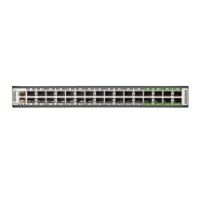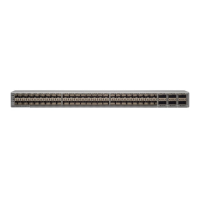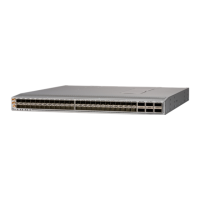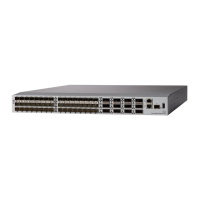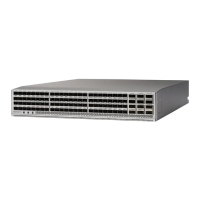The optical transceivers that are not already assembled to their cables come separate from their cables. To
prevent these transceivers and their cables from being damaged, we recommend that you keep the transceivers
disconnected from their cables when installing them in ports and then insert the optical cable into the transceiver.
When removing transceivers from ports, remove their cables before removing the transceivers.
To maximize the effectiveness and life of your transceivers and optical cables, do the following:
• Wear an ESD-preventative wrist strap that is connected to an earth ground whenever handling transceivers.
The switch is typically grounded when you install transceivers and provides an ESD port to which you
can connect your wrist strap. If you cannot find an ESD port, connect the wrist strap to an earth ground
(such as the grounding connection for the chassis).
• Do not remove or insert a transceiver more often than necessary. Repeated removals and insertions can
shorten its useful life.
• Keep the transceivers and fiber-optic cables clean and dust free to maintain high signal accuracy and to
prevent damage to the connectors. Attenuation (loss of light) increases with contamination and should
be kept below 0.35 dB.
• Clean these parts before installing them to prevent dust from scratching the fiber-optic cable ends.
• Clean the connectors regularly; the required frequency of cleaning depends upon the environment.
In addition, clean connectors if they are exposed to dust or accidentally touched. Both wet and dry
cleaning techniques can be effective; refer to your site's fiber-optic connection cleaning procedures.
• Do not touch the ends of connectors. Touching the ends can leave fingerprints and cause other
contamination.
• Inspect routinely for dust and damage. If you suspect damage, clean and then inspect fiber ends under a
microscope to determine if damage has occurred.
Connecting Leaf Switches to APICs
You must downlink one or two (recommended for redundancy) ACI-mode leaf switches (Cisco Nexus
93108TC-EX, 93108TC-FX, 93120TX, 93128TX, 93180LC-EX, 93180YC-EX, 93180YC-FX, 9332PQ,
9348GC-FXP, 9372PX, 9372PX-E, 9372TX, 9372TX-E, 9396PX, or 9396TX) to each Application Policy
Infrastructure Controller (APIC) in your ACI fabric. The type of virtual interface card (VIC) installed on the
APIC determines the types of interface cables that you can use to connect the leaf switches to the APICs.
• The VIC1225 module supports optical transceivers, optical cables, and switches with optical downlink
ports (Cisco Nexus 93180LC-EX, 93180YC-EX, 93180YC-FX, 9332PQ, 9348GC-FXP, 9372PX,
9372PX-E, and 9396PX switches).
• The VIC1225T module supports copper connectors, copper cables, and switches with copper downlink
ports (Cisco Nexus 93108TC-EX, 93108TC-FX, 93120TX, 93128TX, 9372TX, 9372TX-E, and 9396TX
switches).
Before you begin
The APIC and leaf switches in the fabric must be fully installed in their racks and grounded.
Cisco Nexus 9348GC-FXP ACI Mode Hardware Installation Guide
27
Connecting the Switch to the ACI Fabric
Connecting Leaf Switches to APICs
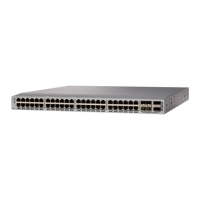
